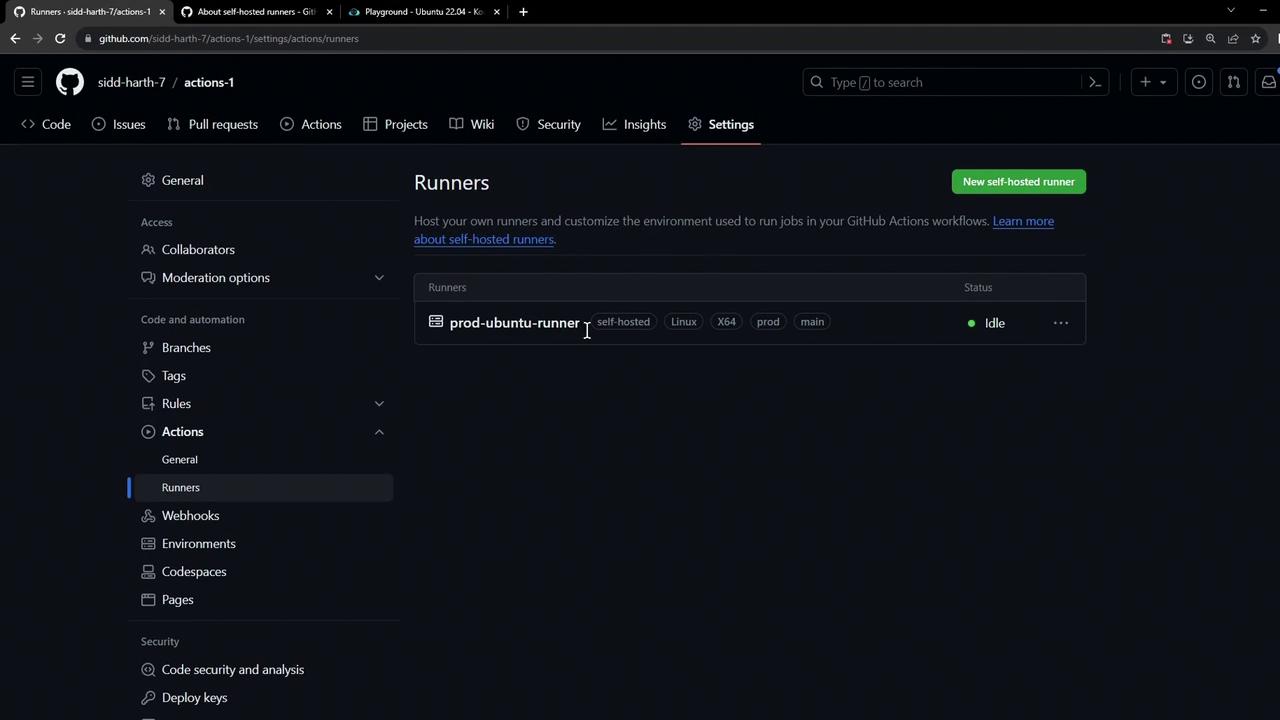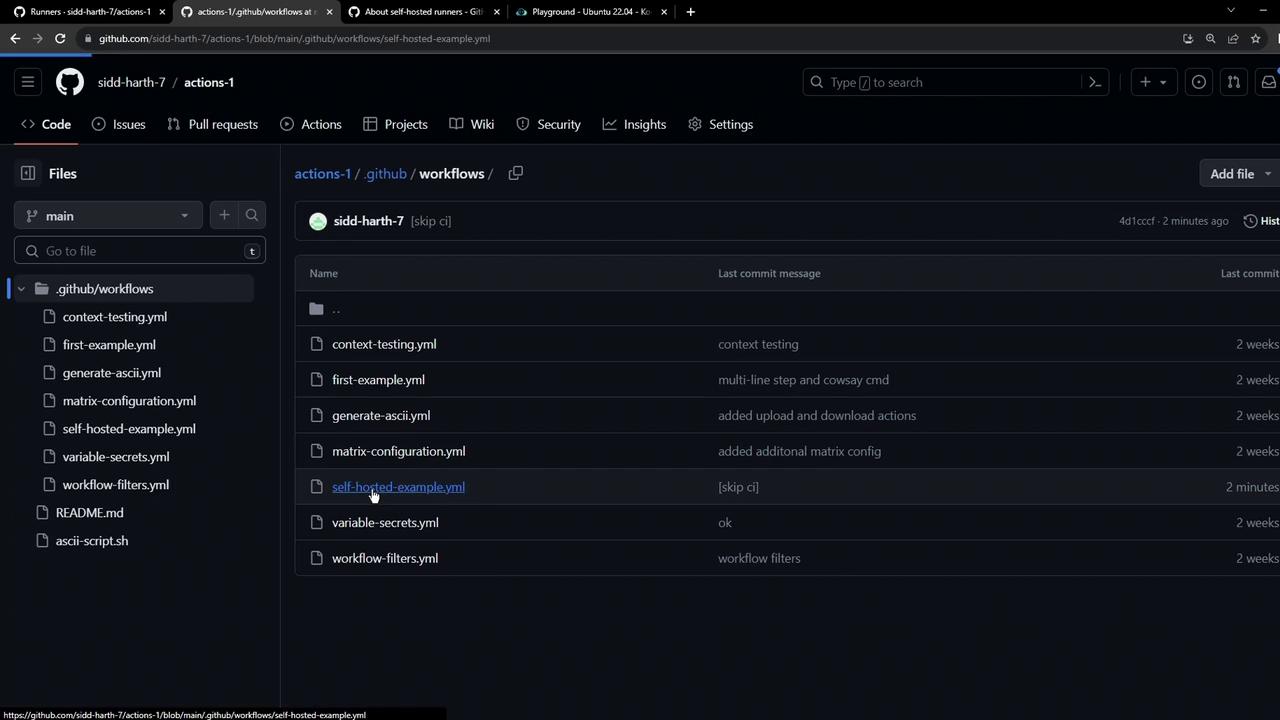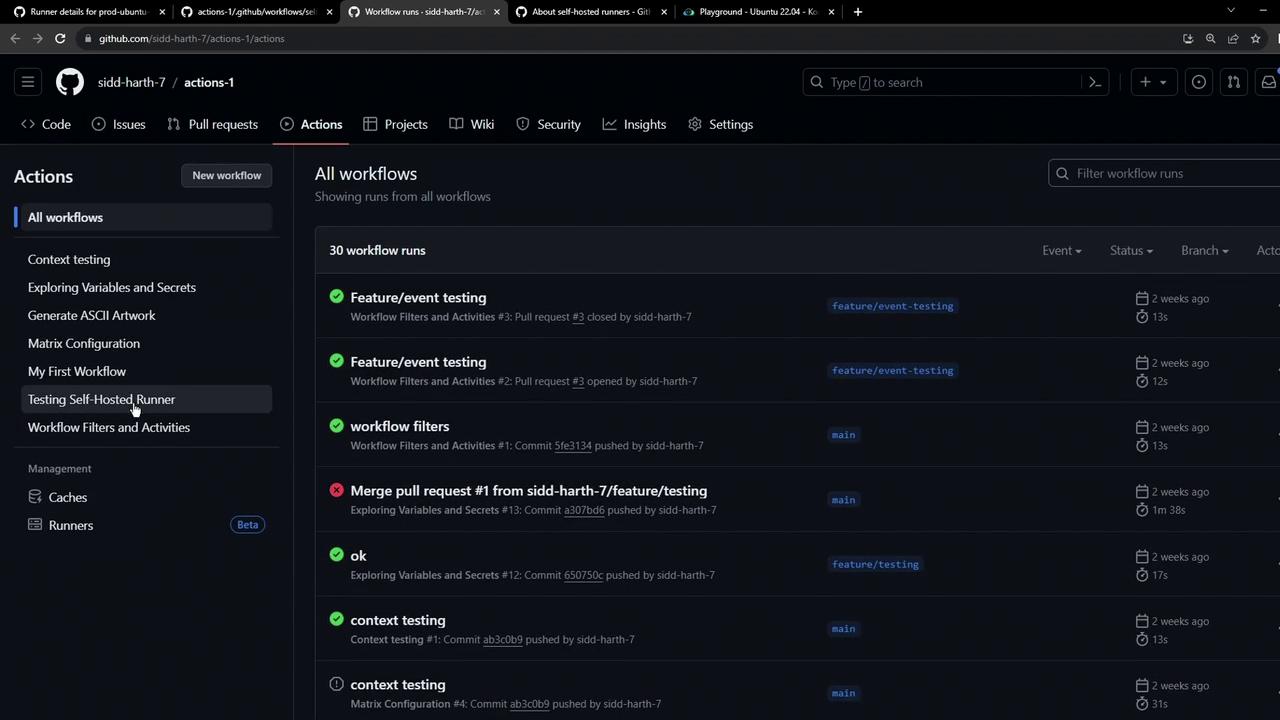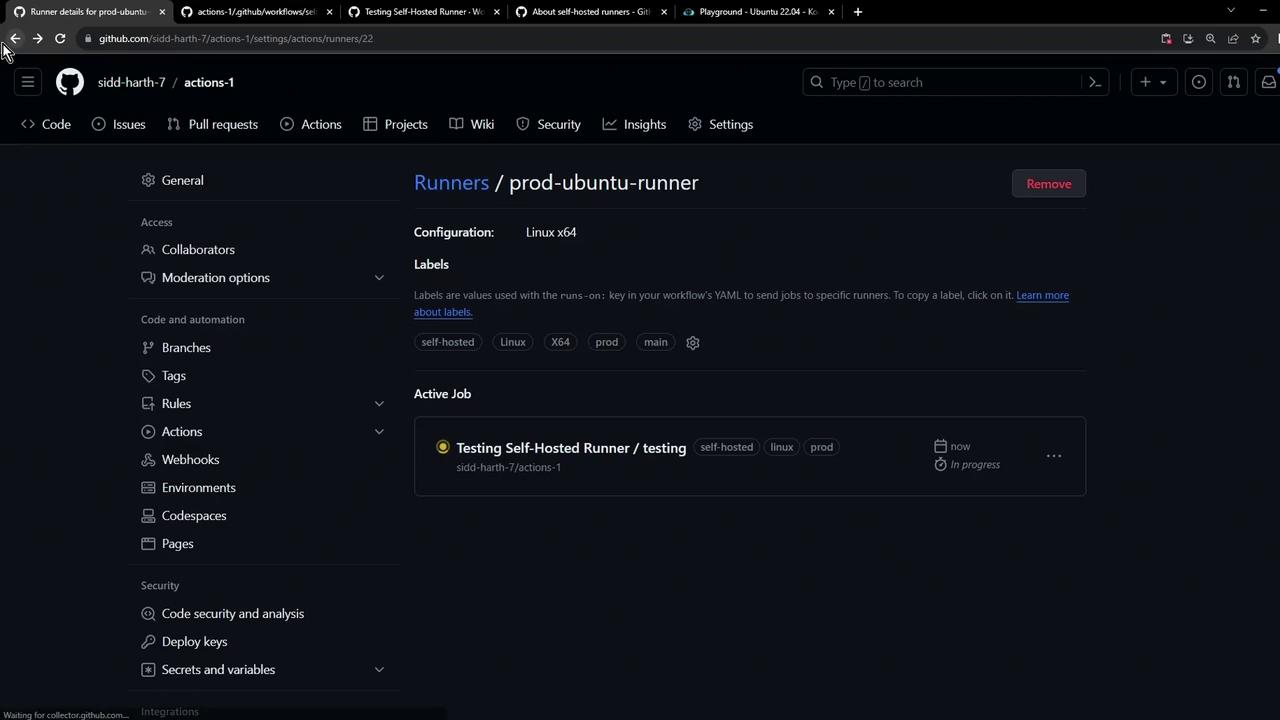GitHub Actions Certification
Self Hosted Runner
Running Workflow on Self Hosted Runner
Leverage your own infrastructure for faster, customizable CI/CD by configuring GitHub Actions to run on a self-hosted runner. In this guide, we’ll:
- Verify your runner registration
- Start the runner service
- Update a workflow to target your self-hosted runner
- Commit and push changes
- Trigger and monitor the job
- Inspect logs both in GitHub and on the runner VM
Prerequisites
- A GitHub repository with Actions enabled
- A VM (or physical server) where the self-hosted runner is installed
- Network access between GitHub and your runner
1. Verify Your Self-Hosted Runner
Navigate to Settings > Actions > Runners in your repository to ensure your runner is registered and idle:

2. Start the Runner Service
On your runner VM, start the runner process:
cd ~/actions-runner
./run.sh
You should see:
Current runner version: '2.310.2'
2023-10-24 14:51:44Z: Listening for Jobs
3. Update Your Workflow to Target the Self-Hosted Runner
Open the .github/workflows directory and locate your workflow YAML:

Original Workflow (GitHub-hosted runner)
name: Testing Self-Hosted Runner
on:
workflow_dispatch:
jobs:
testing:
runs-on: ubuntu-latest
steps:
- name: Echo Content
run: |
echo "Ok"
sleep 15s
Updated Workflow (Self-Hosted Runner)
Replace runs-on: ubuntu-latest with the labels assigned to your runner (e.g., self-hosted, linux, prod):
name: Testing Self-Hosted Runner
on:
workflow_dispatch:
jobs:
testing:
runs-on: [self-hosted, linux, prod]
steps:
- name: Echo Content
run: |
echo "Ok"
sleep 15s
Note
All labels under runs-on must exactly match those on your self-hosted runner. A mismatch (for instance, using production instead of prod) will leave the job pending until a matching runner is available or times out.
4. Commit and Push Your Changes
Commit the updated workflow file directly to your main branch (or a feature branch):

5. Trigger the Workflow
- Open the Actions tab in your repository.
- Select Testing Self-Hosted Runner.
- Click Run workflow to invoke
workflow_dispatch.

The job status will change to in progress as soon as a matching self-hosted runner picks it up.
6. Monitor Jobs and Inspect Logs
For live details on the runner and active jobs, visit the self-hosted runner’s configuration page:

On your VM, the runner’s logs will reflect job execution:
root@ubuntu-host ~/actions-runner ➜ ./run.sh
Current runner version: '2.310.2'
2023-10-24 14:51:44Z: Listening for Jobs
2023-10-24 15:23:57Z: Running job: testing
2023-10-24 15:24:16Z: Job testing completed with result: Succeeded
Warning
Ensure your self-hosted runner has proper security controls. Exposing it directly to the internet or granting it excessive permissions can pose risks.
Best Practices for Self-Hosted Runners
| Label | Description |
|---|---|
| self-hosted | Required for all self-hosted runner jobs |
| linux/mac/windows | OS-specific label matching your runner |
| prod/staging | Environment-specific label for segregation |
References
Watch Video
Watch video content